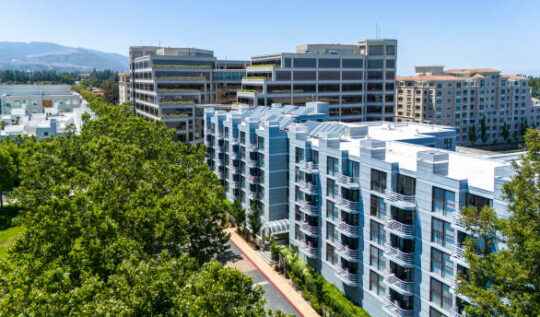The Case for More Density in Los Angeles: What It Means for Developers
Los Angeles faces a serious housing shortage. Rising rents and limited supply push people out of the city and state. Homelessness has also grown worse, driven mainly by high housing costs. Businesses struggle to recruit and retain workers, while families struggle to stay.
Table of Contents
ToggleFor developers, this creates both a challenge and an opportunity. The market needs new housing, but local rules and opposition can stall projects. JDJ Consulting Group helps clients cut through these barriers and bring projects to life.
Why Los Angeles Needs More Housing
California misses its housing goals year after year. Demand remains high, but new construction lags far behind. The result is higher costs, displacement, and people leaving the state.
Studies show the main cause of homelessness is housing prices, not drug use. Research also links high housing costs to slower economic growth. In short, Los Angeles must build more housing to stay competitive and livable.
Density Bonus Units Estimator 🏗️
Why Sprawl Won’t Work
Los Angeles cannot sprawl outward anymore. The Pacific Ocean, mountains, and desert block expansion. The land that remains is either already built or unsuitable for housing.
Even if sprawl were possible, it would not be wise. Sprawl creates pollution, long commutes, and costly infrastructure. Instead, the solution is clear: build upward and inward through infill and multifamily projects.
The Benefits of Density
Denser, walkable communities bring major benefits:
Stronger economies. More people nearby means more customers and higher tax revenue.
Better land use. Fourteen percent of LA County’s land is parking. Converting even part of it into housing would ease the shortage.
Healthier living. Walkable neighborhoods encourage social connections and daily exercise.
Less traffic. Compact communities make public transit and walking more practical.
These benefits align with state and city housing goals, including density bonus programs and SB 9.
Clearing Up Misconceptions
Concerns about density are common, but most are myths.
Crime and property values. Studies show affordable housing reduces crime and increases values. Irvine proves the point—it is safe and has more affordable housing than nearby cities.
Traffic. Suburban layouts force everyone into cars. Denser areas make transit and walking realistic, which reduces congestion.
Gentrification. Research shows new housing slows rent growth and reduces displacement pressure. Building more, not less, helps renters most.
JDJ Consulting helps clients prepare for these debates with impact studies and outreach plans.
Which Developer Incentive Do You Think Has the Biggest Impact?
🏙️ More Density — A Win for Developers & Los Angeles
🔼 Increased Yield
Density bonuses allow you to add more units beyond what zoning would normally allow, increasing revenue without needing new land.
💰 Cost Savings
Reduced parking, flexible setbacks, and waivers can significantly lower construction & regulatory costs.
🕒 Faster Approvals
Projects that align with density laws and state bonus rules often face less resistance and fewer delays in permitting.
🌆 Better Community Outcomes
More housing supply helps affordability, supports more walkable neighborhoods, and makes efficient use of infrastructure.
What This Means for Developers
The path forward for Los Angeles is density. That creates opportunities for:
Transit-oriented projects near Metro stations.
Adaptive reuse of old office and parking lots.
Mixed-use buildings that combine homes with retail.
But these projects require expertise to get approved. Entitlements, permits, and community concerns can delay even the best plans. That’s where JDJ Consulting Group adds value.
How JDJ Consulting Group Helps
Our team works with clients to:
Develop zoning and entitlement strategies.
Expedite permits and reduce delays.
Manage community concerns with data and outreach.
Find sites with strong potential for density and infill.
With JDJ, developers gain a partner who knows Los Angeles codes and politics.
Conclusion
Los Angeles cannot expand outward anymore. To solve its housing shortage, the city must grow upward and inward. Denser, walkable communities are the best path forward.
For developers, this shift creates strong opportunities. With the right guidance, projects can meet demand, overcome opposition, and deliver lasting value.
At JDJ Consulting Group, we help turn that potential into reality. Now is the time to build.
Frequently Asked Questions
Why Los Angeles Needs More Density
▶
▼
What are the primary causes of Los Angeles’s housing shortage?
LA’s shortage is driven by high demand, limited supply, and regulatory constraints. Rising costs push many out of the city; homelessness increases as housing becomes less affordable. Economic growth and liveability suffer when people cannot find housing close to work or transit. Studies show high housing costs—not social factors like drug use—are the main driver of homelessness, so increasing housing quantity is essential. ([JDJ Consulting Group][1])
▶
▼
Why is sprawl not a viable solution anymore?
Sprawl (building outward into undeveloped land) is both physically and economically limited. Natural barriers like ocean, mountains, and desert restrict how far LA can spread. Moreover, sprawl increases pollution, creates long daily commutes, and raises infrastructure costs (roads, utilities). The article argues that internal densification—building up and inward—is more sustainable and efficient. ([JDJ Consulting Group][1])
Benefits of Density & Misconceptions
▶
▼
What are the key benefits of increasing density in LA?
Greater density yields many advantages: it strengthens local economies, taps into underutilized land (e.g. parking lots), encourages walkability, improves public health, and reduces reliance on private automobiles. Denser living enables better transit use and minimizes environmental footprints. These benefits align with state and local housing goals and density incentive programs like SB 9. ([JDJ Consulting Group][1])
▶
▼
What misconceptions about density does the article address?
Several common concerns are challenged:
- That density increases crime or hurts property values—studies show higher housing supply can reduce crime rates and boost property values.
- That density worsens traffic—denser areas allow more public transit and walking, reducing car dependency.
- That new housing causes displacement—research suggests building more housing slows rent growth and dampens displacement pressure. ([JDJ Consulting Group][1])
What It Means for Developers
▶
▼
Where are the greatest opportunities for developers under the push for more density?
Developers should focus on transit-oriented developments near Metro stations; adaptive reuse of underused structures like old offices or parking lots; and mixed-use projects combining residential and commercial components. These types of developments respond well to densification trends and can capitalize on both demand and incentives. ([JDJ Consulting Group][1])
▶
▼
What challenges do developers face when pursuing denser projects?
Even though demand exists, developers must grapple with local opposition, regulatory and permitting delays, community objections, zoning constraints, and entitlement processes. These non-market barriers can slow or block projects, increasing costs and reducing feasibility. Expert strategies (e.g. outreach, impact studies, streamlined permitting) are essential. ([JDJ Consulting Group][1])
Role of JDJ Consulting & How to Navigate the Landscape
▶
▼
How does JDJ Consulting help developers take advantage of densification?
JDJ assists developers with: zoning and entitlement strategy planning; accelerating permits and reducing delays; managing community concerns via data, communication, and outreach; and identifying promising sites for infill or adaptive reuse. Their experience helps clients more effectively navigate codes, politics, and opposition. ([JDJ Consulting Group][1])
▶
▼
What zoning tools and policy incentives support higher density in Los Angeles?
Tools include SB 9 (lot splits / duplex rights), density bonus programs, allowance of mixed-use development, adaptive reuse policies, and possibly relaxed parking requirements. State and local housing goals push for these to be leveraged to boost housing supply. ([JDJ Consulting Group][1])
Implications & Strategy for Developers
▶
▼
Why is now a critical time for developers to consider density?
There is a convergence of high housing demand, state-level pressure for more housing, and recognition that sprawl has limits. Developers who act now can align with policy incentives, ride market demand, and position themselves ahead of regulatory or competitive shifts. The opportunity is large—but delay risks missing out. ([JDJ Consulting Group][1])
▶
▼
How can mixed-use developments help address both housing and service needs?
Mixed-use buildings combine residential units with retail, services, or workplaces. They increase housing supply while making neighborhoods more livable—residents can access shops and amenities nearby. Such developments enhance walkability, reduce transportation needs, and often contribute positively to local economies. ([JDJ Consulting Group][1])
Potential Risks & Considerations
▶
▼
Could increasing density cause displacement or gentrification?
While there is often concern that new housing drives displacement, the article suggests data show that increasing housing supply tends to moderate rent increases and reduce pressure that causes displacement. Building more housing generally helps renters more than restricting growth does. Still, thoughtful policy design and protections are important. ([JDJ Consulting Group][1])
▶
▼
Will density increase traffic and reduce quality of life?
Contrary to common belief, density can reduce traffic when paired with good transit and walkable design. The article argues that suburban spread forces car use, while compact, dense neighborhoods make walking, biking, and mass transit more feasible—improving quality of life. Thoughtful design, infrastructure investment, and mobility planning are key. ([JDJ Consulting Group][1])
Long-Term Value & Market Trends
▶
▼
How does density align with long-term value for developers?
Denser projects often offer higher return per unit of land—more units, better use of infrastructure, and premium for proximity to transit or amenities. As housing demand remains strong, well-located dense projects may enjoy greater appreciation, market stability, and resilience. ([JDJ Consulting Group][1])
▶
▼
How does density support environmental and health benefits?
Dense, walkable neighborhoods promote healthier lifestyles—more walking, less time in cars—reducing air pollution and greenhouse gas emissions. Also, converting parking lots or underused land for housing reduces heat islands and inefficient land use. These environmental co-benefits can align with regulatory and community goals. ([JDJ Consulting Group][1])
▶
▼
What strategies should developers adopt to succeed in a density-focused environment?
Developers should align early with zoning incentives, conduct community outreach, execute impact studies, pursue sites near transit or already suitable for infill, consider mixed-use or adaptive reuse opportunities, and plan for permitting and entitlement proactively. Having expertise in navigating local politics and environmental reviews becomes a competitive advantage. ([JDJ Consulting Group][1])





